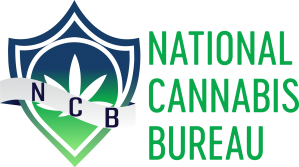Citing former president Richard Nixon, the Drug Enforcement Administration (DEA) celebrated the 50th anniversary of the agency’s creation and the War on Drugs, wrapping up 50 years of failed attempts to curb drug abuse, according to a July 5 announcement. The DEA’s tactics are not working: Decades of research indicates that drug use is up in just about every category.
Nixon created the DEA to combat the “menace” of drug abuse on July 1, 1973. That’s just four years after Gallup first asked Americans if they’ve tried smoking pot, and only 4% said they had tried it in 1969. Now that number is up to almost half, and 45% of American teens said they had tried pot, 47% of high school students by another count. Cannabis and hallucinogen use is at an all-time high, a National Institutes of Health-supported study reported in 2022.
“The Drug Enforcement Administration celebrated its 50th anniversary on July 1, 2023,” the announcement reads. “Over the past 50 years, DEA has worked to keep American communities safe and healthy by preventing criminal drug networks and drug-related violence and deaths.
In 1973, former President Richard Nixon proposed the creation of a new agency when he declared ‘an all-out global war on the drug menace.’ Congress heard months of testimony for the proposal and created the Drug Enforcement Administration later that year. The Drug Enforcement Administration integrated narcotics agents and U.S. Customs agents into one effective force. These agents work to remove dangerous drugs from the street and prevent them from coming across our borders.”
Are law enforcement officers at least focusing on hard drugs? The short answer is no. Police officers in the United States still make more arrests for cannabis offenses than for any other drug, according to FBI data. Pew research notes that in the 50 states and the District of Columbia in 2018, amounting to 40% of the 1.65 million total drug arrests in the U.S. that year were for pot.
The War on Drugs presents some ethical questions, however its roots in prejudice are reason alone to dismiss the war’s successes.
Questionable Beginnings
By today’s standards, Nixon’s comments as president are shocking, and the War on Drugs itself has been called racist. Nixon’s domestic policy chief, John Ehrlichman, admitted first in 1994 that the War on Drugs was specifically designed to target the Black community, and that lies were created about drugs.
“The Nixon campaign in 1968, and the Nixon White House after that, had two enemies: the antiwar left and Black people,” Ehrlichman said. “You understand what I’m saying? We knew we couldn’t make it illegal to be either against the war or Black, but by getting the public to associate the hippies with marijuana and Blacks with heroin, and then criminalizing both heavily, we could disrupt those communities. We could arrest their leaders, raid their homes, break up their meetings, and vilify them night after night on the evening news. Did we know we were lying about the drugs? Of course we did.” Ehrlichman spoke up about the matter again later on, such as in 2016.
Unfortunately, this bias is clearly evident today, as observed in the way cannabis laws are enforced. Data collected by the American Civil Liberties Union (ACLU) shows that due specifically to racial profiling and bias in cannabis enforcement, Black people are 3.6 times more likely than white people to be arrested for cannabis possession, despite similar usage rates. That rate goes up to 10 times more likely than whites to be arrested for pot in certain areas such as Montana or Kentucky.
The War on Drugs Didn’t Work
In the bigger picture, DEA enforcement isn’t deterring drug use effectively, according to multiple reports by Gallup.
“The war on drugs has been raging for decades,” Jennifer Robison wrote for Gallup in 2002. “There is no sign of victory, or even detente. Although they’re swamped with anti-drug messages, kids keep taking illegal drugs, and the drugs are getting more dangerous. The Centers for Disease Control and Prevention’s 1999 Youth Risk Behavior Surveillance System found that almost half (47%) of all high school students had used marijuana at least once. Ten percent had tried a form of cocaine.”
“Increased non-medical use—as well as racial, ethnic and class prejudice—affected public opinion,” they said. “What had been a medical condition became deviant or criminal. This shift led to a wave of laws against heroin, marijuana and cocaine.”
The post DEA Celebrates 50th Anniversary of War on Drugs, Drugs Are Winning appeared first on High Times.

